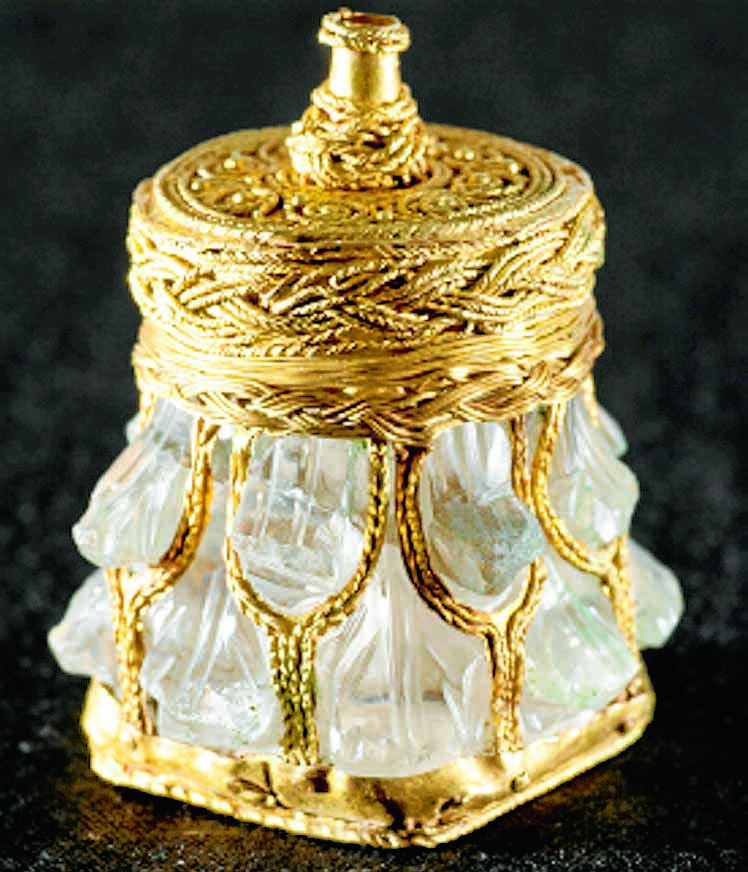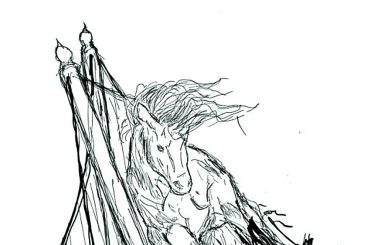And the inscription says the jar was made for a bishop named Hyguald.
Most of the Galloway Hoard is currently on display at Kirkcudbright Galleries. However, some material which was wrapped in extremely fragile, rarely surviving textiles, is undergoing careful conservation and meticulous research behind the scenes as part of a three-year, £1million Arts and Humanities Research Council-funded project led by National Museums Scotland in partnership with the University of Glasgow.
When first removed as a bundle the jar could be only partially glimpsed through its textile wrapping but 3D X-ray imaging allowed it to be investigated within its wrapping without damaging it and this revealed that the base had an inscription.
The jar, which is around 5cm high and resembles an ornate perfume bottle, is thought to have had an ecclesiastical function. It has now been carefully separated from its wrapping to reveal that the inscription on the base, in gold letters, translates as ‘Bishop Hyguald had me made.’
It is the clearest evidence that some of the material in the hoard may have come from a church in the Anglo-Saxon kingdom of Northumbria, which included Dumfries and Galloway, and stretched as far north as Edinburgh and as far south as Sheffield.
Professor Alex Woolf, from the University of St Andrews, said: “The inscription is in Latin, which was the universal language of the Western Church in those days. The sources and records of the period are incomplete, but what we do know from them is that there were several ecclesiastics in early Medieval Northumbria with the name Hyguald.
“It may well be that what we’re looking at is an otherwise undocumented mid-9th century bishop of either Whithorn or Hexham.”
Dr Leslie Webster, former Keeper of Britain, Prehistory and Europe at the British Museum, added: “It was, I think even in its time, very, very special. It’s a showcasing piece from a very high-status workshop, such as one that you might expect a bishop to have in one of his monasteries.
“This object is absolutely fascinating. I’ve seen a lot of Anglo-Saxon finds over the years in my professional career, some of them amazing. But this absolutely knocks them all into a cocked hat.”
The exhibition, Galloway Hoard: Viking-age Treasure runs at Kirkcudbright Galleries until July 10 2022.















